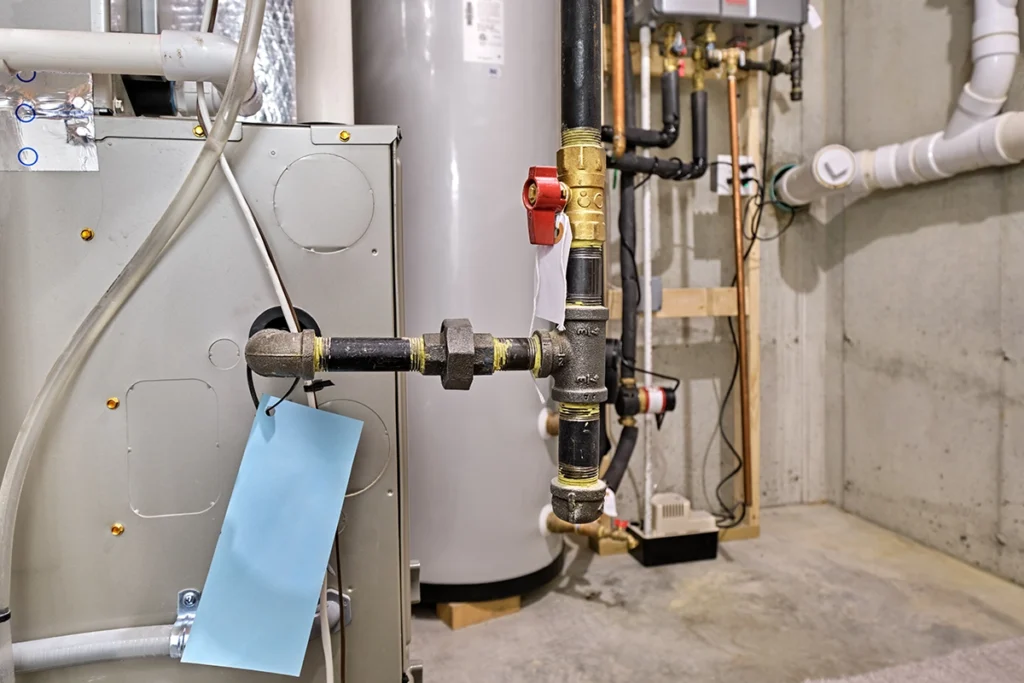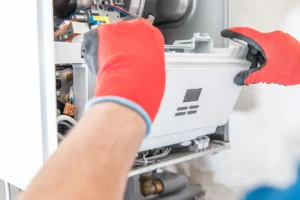When homeowners ask what the gas valve on a furnace actually does, it usually comes up during a repair call — often right when their heat suddenly stops working. At Sub Zero Temp Control, we get this question all the time. And honestly, I don’t blame anyone for being confused. Furnaces have plenty of parts that sound similar, but the gas valve is one of the most important. It controls fuel flow, keeps your home safe, and helps the burners fire the way they should. (And trust me, once you’ve seen a furnace with a stuck valve, you never forget it.)
Below, I’ll break down how the valve works, why it fails, and when it’s time to call a pro.
What the Gas Valve on a Furnace Actually Does
At its core, the gas valve on a furnace regulates the flow of natural gas or propane into the burner assembly. Without it, your system can’t ignite safely. The valve opens only when the control board tells it to, and it closes immediately when heat is no longer needed.
This part also works with safety components like the flame sensor and the pressure switch. When everything communicates the way it should, the furnace runs smoothly. But when one part misfires, you’ll feel it quickly — usually as no heat, weak heat, or short cycling. And if airflow isn’t right, the pressure switch won’t allow the gas valve to open at all. That’s why so many homeowners confuse pressure switch issues with valve failures. If you’re dealing with repeated shutdowns or airflow errors, our guide on furnace pressure switch problems and how to fix them breaks down what might be causing the system to lock out.
For a deeper look at furnace efficiency, operation, and safe performance, the U.S. Department of Energy offers guidance on how furnaces and boilers work.
How the Gas Valve Responds During Each Heating Cycle
Every heating cycle follows a predictable pattern. First, the inducer motor starts. Then, the pressure switch confirms proper airflow. After that, the igniter warms up — usually for 15 to 30 seconds. Once the igniter glows, the control board opens the gas valve to the furnace, allowing fuel to reach the burners.
If the flame sensor detects a clean flame, the heat exchanger warms up and the blower kicks on. If anything interrupts this sequence, the valve closes immediately. It’s a safety-first component, even if it doesn’t look like much.
(One time, I found a spider web sitting right over the burner. The flame couldn’t form correctly, and the valve shut the system down immediately — inconvenient, sure, but exactly what it’s supposed to do.)
Common Problems With a Gas Valve on a Furnace
Most gas valve issues fall into predictable categories. Even though every home is different, these are the problems we see most often:
Sticking or Slow-Opening Gas Valve
A valve can get sticky from age, debris, or internal wear. Sometimes it half-opens, which causes weak heat or rapid cycling.
Faulty Solenoid in the Gas Valve on a Furnace
Inside the valve are small solenoids that open and close pathways. When a solenoid fails, the valve won’t respond to signals from the control board.
Electrical Failures and Loose Connections
If the wires feeding the valve are loose or corroded, the signal drops. You’ll usually notice intermittent heat, which can be maddening on cold nights.
When the Gas Valve for a Furnace Must Be Replaced
Eventually every valve reaches the end of its life. If the valve fails safety tests, doesn’t open reliably, or shows internal corrosion, replacement is the safest option. There’s no patching a bad valve — not when gas is involved.
According to the National Fire Protection Association (NFPA), heating equipment is responsible for thousands of home fires each year, which is why proper furnace and gas system maintenance matters.
How We Diagnose a Gas Valve Problem at Sub Zero Temp Control
When we test a gas valve on a furnace, we run through several steps:
We check voltage signals from the control board.
We measure resistance through each solenoid coil.
We verify pressure at the gas manifold.
We inspect flame characteristics for proper combustion.
And yes — we always test the ignition sequence multiple times. Some issues only show up on the second or third cycle. (That one still catches new techs off guard.)
If the furnace fails any part of the sequence, we dig deeper to confirm whether the valve itself is the issue or whether another component is causing it.
Can a Homeowner Troubleshoot a Gas Valve?
Some things you can check safely:
Replace or clean the furnace filter
Make sure the thermostat is set to heat
Verify the gas shutoff is open
Look for obvious wiring disconnections
But anything involving the gas valve on a furnace should be handled by a trained technician. Gas leaks aren’t something to gamble with. Even experienced techs approach gas valves cautiously and test every connection.
When to Call a Professional
If your furnace clicks but never ignites, blows cool air, or keeps cycling, the gas valve may not be opening consistently. Sometimes the issue shows up first as a weak or unreliable flame. If you’ve noticed your pilot going out often, our post on why your furnace pilot light keeps going out is a good place to start.
Still, once a furnace struggles to light or stays in a shutdown loop, testing the gas valve and the rest of the ignition sequence should be done by a trained technician. Gas and combustion issues aren’t something to troubleshoot blindly. A pro can confirm the exact cause, repair it safely, and make sure your heat stays reliable.
Contact Us
Need help with a gas valve on a furnace or another heating issue? Contact Sub Zero Temp Control today. We’re here to help you stay warm, safe, and comfortable with reliable heating repair and honest service. We proudly serve homeowners in Vancouver, WA and the surrounding areas.
FAQs About Gas Valves
Here are some of the most common questions we hear from homeowners about furnace gas valves.
Most gas valves last 10 to 20 years. The lifespan depends on fuel quality, system maintenance, and how often the furnace cycles.
Yes. A sticking or partially opening valve reduces fuel flow, which leads to low burner flame and uneven heating.
No. Repairs involving gas pressure, combustion, or electrical connections should be handled by a licensed technician.
Clicking usually means the igniter is working, but the gas valve on a furnace isn’t opening. It may be a power issue, a bad solenoid, or a safety lockout.How long does a gas valve on a furnace usually last?
Can a bad gas valve cause weak heat?
Is it safe to replace a gas valve yourself?
Why does my furnace keep clicking but never igniting?






